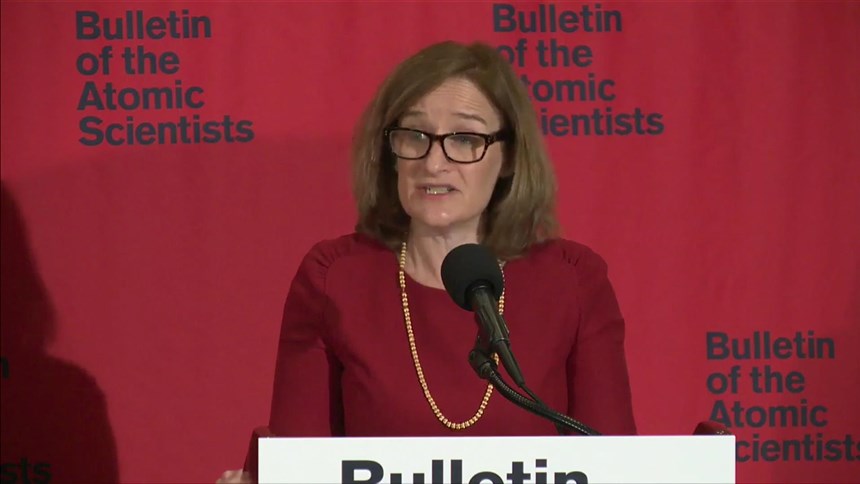Scientists move Doomsday Clock closer to midnight
- The Tech Platform

- Feb 4, 2020
- 3 min read
The Bulletin of the Atomic Scientists adjusted the clock to reflect human-caused threats such as nuclear weapons and accelerated global warming.
Scientists warned Thursday that Earth is inching closer to disaster.
The Bulletin of the Atomic Scientists moved the hands of its symbolic Doomsday Clock closer to midnight, indicating that the likeliness of a human-caused apocalypse has increased since last year.
The Bulletin adjusted the clock to reflect looming threats from nuclear weapons and accelerated global warming.
The clock is now set at 100 seconds to midnight, the closest it has ever been to symbolic doom and the first time the hands have been within the two-minute mark.
"We are now expressing how close the world is to catastrophe in seconds — not hours, or even minutes," Rachel Bronson, the Bulletin's president and CEO, said in a statement. "We now face a true emergency — an absolutely unacceptable state of world affairs that has eliminated any margin for error or further delay."
Robert Rosner, chair of the Bulletin's Science and Security Board, called the adjustment "very bad news," adding that nuclear insecurity and climate change have created "an enduring and disturbing reality."
"We have normalized a very dangerous world in terms of the risks of nuclear warfare and climate change," Rosner said in a public briefing.
The Bulletin placed much of the blame on world leaders who have eroded international arms agreements and both denigrated and denied the science of global warming.
Former United Nations Secretary-General Ban Ki-moon urged countries to heed the "clear and present dangers" posed by nuclear arsenals. He also warned that urgent action on climate change is critical and praised the efforts of youth-led protests sparked by the teenage activist Greta Thunberg.
"We must see an immediate end to the investment in and exploration of fossil fuels," he said. "We must heed the demands of the young people on our streets and listen to the science. We cannot negotiate with nature."
In addition to nuclear weapons and climate change, the Bulletin highlighted the dangers posed by information warfare and disruptive technologies. Robert Latiff, a member of the Bulletin's Science and Security Board, pointed to so-called deepfake audio and video recordings as an example of how technology can sow political antagonism and lead to global instability.
"The resulting falsehoods hold the potential to create economic, social and military chaos," Latiff said, adding that nuclear arms, climate change and disruptive technologies are a “witch’s brew of ingredients for global conflict.”
The last time the Doomsday Clock’s minute hand was moved was in 2018, when the Bulletin, a nonprofit organization that oversees the Doomsday Clock, set the timepiece at two minutes to midnight. At the time, it was the closest humanity had inched to symbolic doom since 1953, during the Cold War.
The organization kept the two-minutes-to-midnight setting in 2019, citing what they called “multiple existential threats,” including cyberattacks, nuclear arms races and ongoing climate change.
The Bulletin of Atomic Scientists was founded in 1945, and the group has maintained the Doomsday Clock since 1947. In its 73-year history, the furthest the clock has been to midnight was in 1991, at the end of the Cold War, when it was set to 17 minutes to midnight.
Each year, the Bulletin consults with a board of sponsors that includes 13 Nobel Laureates to analyze a range of threats to determine whether the Doomsday Clock’s hands should be adjusted.
SOURCE:Paper.li





Comments